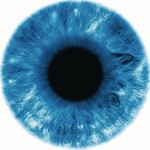
The NICE guideline on common mental disorders (PDF) was published back in May 2011, which means that it only included evidence published up until the end of 2010. This is a fast moving field, so NICE have now put out an evidence update, which focuses on new evidence published from Sept 2010 to Oct 2012.
This update aims to “highlight new evidence that health and social care professionals may wish to consider alongside current guidance”.
The publication doesn’t contain a nice summary of what the authors mean by ‘common mental disorders’ but a quick look at the search strategy tells us that this update includes the following conditions:
- Depression
- Stress
- Anxiety disorders
- Agoraphobia
- Obsessive compulsive disorder
- Panic disorder
- Phobic disorders
- Post-traumatic stress disorders
- Body dysmorphia
Methods
The update was put together by an Advisory Group of topic experts who reviewed and prioritised the research picked up by their comprehensive literature search. An expert commentary was added by these experienced professionals.
The search identified over 5,000 potential studies, which was eventually whittled down to 16 papers that were discussed by the advisory group, who decided to include 9 items in the update.
They included 3 systematic reviews, 4 meta-analyses, 1 randomised controlled trial and 1 cross-sectional study. They also referenced 4 critical summaries of the included studies from the DARE database, which I have added to the bibliography at the end of this blog.
Results

The update does not highlight any important new evidence that will change the recommendations in the current NICE guidance
The results were presented around 3 areas, where a number of key points were made:
1. Improving access to services
- Limited evidence suggests that a community-based intervention of rapid access to care may result in improved mental health in black African or black Caribbean populations. (Afuwape, 2010)
- NICE CG123 recommends that primary and secondary care clinicians, managers and commissioners should collaborate to develop local care pathways that promote access to services for people with common mental health disorders by: supporting the integrated delivery of services across primary and secondary care; having clear and explicit criteria for entry to the service; focusing on entry and not exclusion criteria; having multiple means (including self-referral) to access the service; and providing multiple points of access that facilitate links with the wider healthcare system and community in which the service is located.
- A Malaysian translation of the 7-item Generalized Anxiety Disorder (GAD-7) scale seems to be reliable and correlates with results of other diagnostic instruments. (Sidik, 2012)
- NICE CG123 recommends considering modifications to the method and mode of delivery of assessment and treatment interventions and outcome monitoring (based on an assessment of local needs), which may typically include using: technology (for example, text messages, email, telephone and computers) for people who may find it difficult to, or choose not to, attend a specific service; and bilingual therapists or independent translators.
2. Identification and assessment of mental disorders
- Asking 2 general case-finding questions about depression may be useful for identifying or ruling out postnatal depression. (Mann and Gilbody, 2011)
- NICE CG123 recommends asking 2 questions in people who may have depression: ‘During the last month, have you often been bothered by feeling down, depressed or hopeless?’ and ‘During the last month, have you often been bothered by having little interest or pleasure in doing things?’ If the person answers ‘yes’ to either of these questions further assessment for depression should be considered.
- A similar recommendation in ‘Antenatal and postnatal mental health’ (NICE CG45) states: If the woman answers ‘yes’ to either of the initial questions, also ask: ‘Is this something you feel you need or want help with?’ In the postnatal population, a ‘yes’ response to this third question would lead to further assessment for depression.
- Generally, instruments for identifying anxiety and depression in people with learning disabilities seem to be insufficiently studied, although the Glasgow Anxiety Scale for people with an Intellectual Disability (GAS-ID), the Anxiety Depression and Mood Scale (ADAMS) and the Glasgow Depression Scale for people with a Learning Disability (GAS-LD) may be useful. (Hermans, 2011) (Hermans and Evenhuis, 2010)
- NICE CG123 recommends that for people with significant language or communication difficulties, for example people with sensory impairments or a learning disability, clinicians should consider using the Distress Thermometer and/or asking a family member or carer about the person’s symptoms to identify a possible common mental health disorder. If a significant level of distress is identified, offer further assessment or seek the advice of a specialist.
- GPs may correctly rule out distress and depression in about 80% of people who do not have distress or depression; however GPs may only diagnose distress correctly in about half of people with distress and may only diagnose depression correctly in about a third of people who have depression. The 15-item Geriatric Depression Scale (GDS) may be useful in primary care for diagnosing depression in older people. (Mitchell, 2011) (Mitchell, 2010).
- NICE CG123 recommends that if the identification questions indicate a possible common mental health disorder, but the practitioner is not competent to perform a mental health assessment, the person should be referred to an appropriate healthcare professional. If this professional is not the person’s GP, the GP should be informed of the referral.
- NICE CG123 recommends that when assessing a person with a suspected common mental health disorder, clinicians should consider using: a diagnostic or problem identification tool or algorithm, for example, the Improving Access to Psychological Therapies (IAPT) screening prompts tool; or a validated measure relevant to the disorder or problem being assessed, for example, PHQ-9, the Hospital Anxiety and Depression Scale (HADS) or GAD-7 to inform the assessment and support the evaluation of any intervention.
- The Patient Health Questionnaire (PHQ)-9, using a diagnostic cut- off score of 10, may have increased sensitivity in primary care compared with hospital settings. (Manea, 2012).
- NICE CG123 recommends that when assessing a person with a suspected common mental health disorder, consider using: a diagnostic or problem identification tool or algorithm, for example, the IAPT screening prompts tool; or a validated measure relevant to the disorder or problem being assessed, for example, PHQ-9, the HADS or GAD-7 to inform the assessment and support the evaluation of any intervention.
3. Treatment and referral for treatment
- Evidence for telephone counselling in people with acquired physical disabilities seems to be limited, but may indicate beneficial effects on coping strategies, community integration and depression. (Dorstyn, 2011).
- NICE CG123 does not include recommendations for telephone counselling.
Conclusions
This update does not highlight any important new evidence that will impact on the recommendations in the current NICE guidance, but it does flag up some high quality research that managers, commissioners and health professionals may like to look at in more detail.
Links

Managers, commissioners and health professionals may like to look at the individual studies highlighted by this update
Common mental health disorders: Evidence Update March 2013 (PDF). NICE, Evidence update 31, Mar 2013.
Common mental health disorders: identification and pathways to care (PDF). NICE, CG123, May 2011.
Afuwape SA, Craig TKJ, Harris T et al. (2010) The Cares of Life Project (CoLP): An exploratory randomised controlled trial of a community-based intervention for black people with common mental disorder. Journal of Affective Disorders 127: 370–4 [Abstract]
Sidik SM, Arroll B, Goodyear-Smith F (2012) Validation of the GAD-7 (Malay version) among women attending a primary care clinic in Malaysia (PDF). Journal of Primary Health Care 4: 5–11
Mann R, Gilbody S (2011) Validity of two case finding questions to detect postnatal depression: a review of diagnostic test accuracy. Journal of Affective Disorders 133: 388–97 [Abstract]
Centre for Reviews and Dissemination (2012) Validity of two case finding questions to detect postnatal depression: a review of diagnostic test accuracy. Database of Abstracts of Reviews of Effects
Hermans H, van der Pas FH, Evenhuis HM (2011) Instruments assessing anxiety in adults with intellectual disabilities: a systematic review. Research in Developmental Disabilities 32: 861–70. [Abstract]
Hermans H, Evenhuis HM (2010) Characteristics of instruments screening for depression in adults with intellectual disabilities: systematic review. Research in Developmental Disabilities 31: 1109–20. [Abstract]
Mitchell AJ, Rao S, Vaze A (2011) Can general practitioners identify people with distress and mild depression? A meta-analysis of clinical accuracy. Journal of Affective Disorders 130: 26–36. [Abstract]
Mitchell AJ, Bird V, Rizzo M et al. (2010) Diagnostic validity and added value of the geriatric depression scale for depression in primary care: a meta-analysis of GDS30 and GDS15. Journal of Affective Disorders 125:10–17 [Abstract]
Centre for Reviews and Dissemination (2011) Diagnostic validity and added value of the geriatric depression scale for depression in primary care: a meta-analysis of GDS30 and GDS15. Database of Abstracts of Reviews of Effects.
Manea L, Gilbody S, McMillan D (2012) Optimal cut-off score for diagnosing depression with the patient health questionnaire (PHQ-9): a meta-analysis. CMAJ 184: DOI:10.1503/cmaj.110829
Centre for Reviews and Dissemination (2012) Optimal cut-off score for diagnosing depression with the patient health questionnaire (PHQ-9): a meta-analysis. Database of Abstracts of Reviews of Effects.
Dorstyn DS, Mathias JL, Denson LA (2011) Psychosocial outcomes of telephone-based counseling for adults with an acquired physical disability: a meta-analysis. Rehabilitation Psychology 56: 1–14 [PubMed abstract]
Centre for Reviews and Dissemination (2011) Psychosocial outcomes of telephone-based counseling for adults with an acquired physical disability: a meta-analysis. Database of Abstracts of Reviews of Effects.

RT @Mental_Elf: NICE evidence update on common mental disorders covers #depression, #anxiety and improving access to services http://t.c …
@Lindsay3765 found this on depression if it any good for u http://t.co/0QlUneQPBW
RT @Mental_Elf: The Geriatric Depression Scale may be useful in #primarycare for dx #depression in older people http://t.co/XKNahHM8Lf
New evidence update from NICE on common mental disorders http://t.co/OHp3VKe7Sw via Mental Elf
New evidence update from NICE on common mental disorders http://t.co/EPjlycIpd5 via @Mental_Elf
[…] http://www.thementalelf.net/mental-health-conditions/anxiety-disorders/new-evidence-update-from-nice… […]